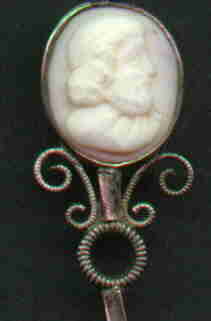
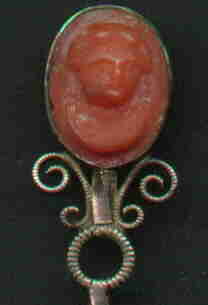
Gem carving was mainly an activity carried out in certain Bavarian regions of Europe. I have just been able to acquire two hand carved agate cameo spoons. Most of the other European gemstone spoons feature garnets.


These two spoons feature hand carved agate cameo's. Gem cutting is an old skill that is no longer done on a commercial scale (except in China where labor is very cheap)

This is what the complete spoon looks like -- marked, but very difficult to read--prob 800
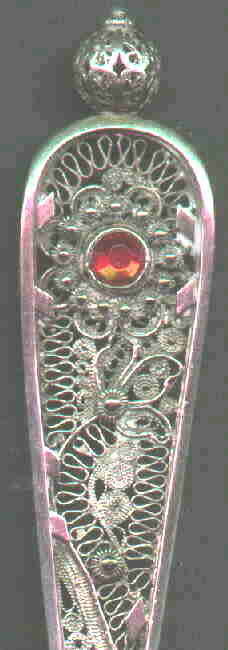
A beautiful large filigree serving spoon from Germany featuring a large garnet
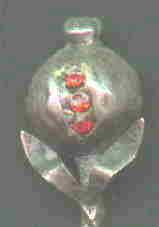
three small garnets set into some type of fruit (pomegranite?)


Three faceted garnets set in the finial as cherries on a stem. The gold washed bowl is engraved "Berlin". These stones may be manmade.
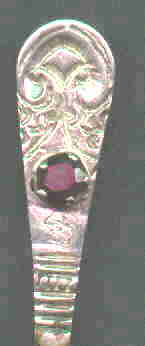
nice sized red garnet mounted on a hand made Austrian spoon (1922)
During the first part of the 20th century, the famous English firm of Liberty & Co. developed a unique looking piece of art nuevo flatware featuring flat cut stones mounted at the handle. These extremely thin pieces of stone were difficult to create and few of these pieces have survived. This demi spoon features four of these stones. The top is probably bloodstone, the two red ones on the side are probably jasper, and the bottom one is a dark green and is probably jade. The gold washed bowl is engraved "Edinburgh". This spoon is not Liberty, but it is an obvious derivative of this style.
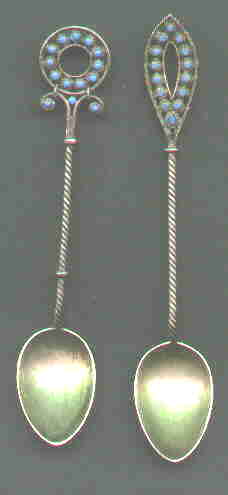
Two interesting spoons made with artificial turquoise. The back indicates they are made of 800 silver which leads me to believe that they are European, with a silversmith mark of "HW". I have a few more of these if you have an interest in trading or buying.
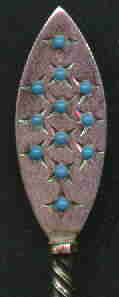
I suspect that this spoon with man made turquoise is from the USA because it is marked "sterling", but I am showing it here because of the similar spoons from Europe. The nice part of this spoon is the small engravings which make the stones look like "stars"
Proceed to next Gemstone exhibit
Return to Gemstone index
Return to Spoon World index